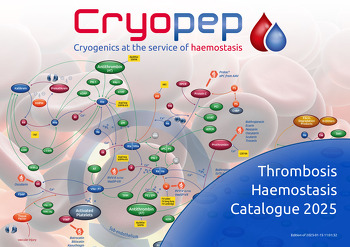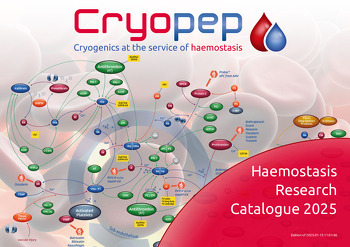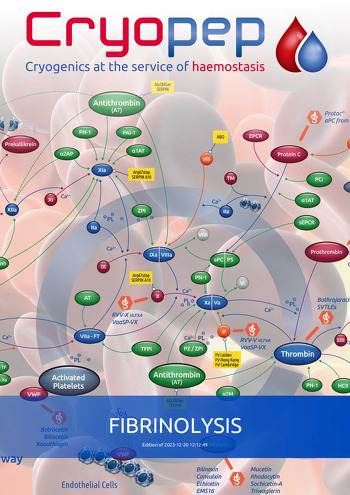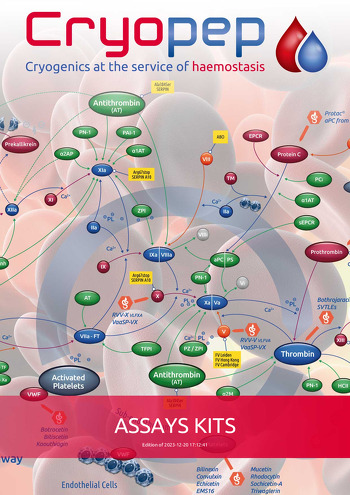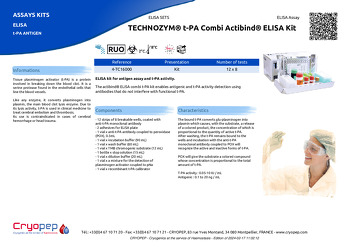HEMOSTASIS COAGULATION ROUTINE REAGENTS FIBRINOLYSIS TISSUE PLASMINOGEN ACTIVATOR T-PA ANTIGEN
HEMOSTASIS COAGULATION RESEARCH REAGENTS ASSAYS KITS ELISA
TECHNOZYM® t-PA Combi Actibind® ELISA Kit
ELISA kit for antigen assay and t-PA activity.
The actibind® ELISA combi t-PA kit enables antigenic and t-PA activity detection using antibodies that do not interfere with functional t-PA.
Informations
Tissue plasminogen activator (t-PA) is a protein involved in breaking down the blood clot. It is a serine protease found in the endothelial cells that line the blood vessels.
Like any enzyme, it converts plasminogen into plasmin, the main blood clot lysis enzyme. Due to its lysis activity, t-PA is used in clinical medicine to treat cerebral embolism and thrombosis.
Its use is contraindicated in cases of cerebral hemorrhage or head trauma.
Documentation
Download the product sheetPrice list, safety data sheets and notices are accessible to our registered customers.
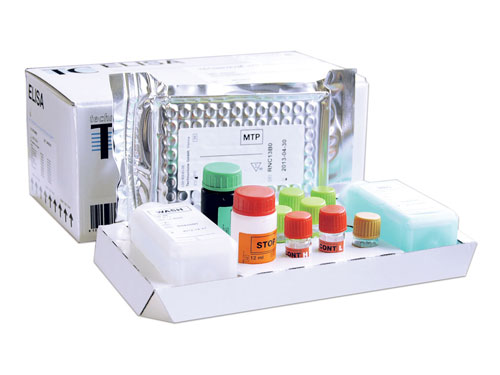
ELISA Assay






References
| 4-TC16000 | Kit | 12 x 8 tests |












